A new report by the International Council on Clean Transportation (ICCT) concludes CO2 emissions from aircraft must peak as early as 2025 if the aviation industry is to bring itself in line with Paris Agreement temperature goals. The report, ‘Vision 2050’, uses three scenarios – Action, Transformation and Breakthrough – to assess measures needed to meet global temperature targets of 2, 1.75 and 1.5 degrees Celsius by 2050. The outcomes reflect CO2 reductions of between 9% and 94% below 2019 levels through the use of sustainable aviation fuels, aircraft fleet renewal, improved operational efficiency and the introduction of zero emission planes (ZEPs) powered mainly by liquid hydrogen, reports Tony Harrington. The report comes as ICAO member states meet next month to discuss the establishment of a long-term aspirational goal to limit emissions from international aviation. “One thing is certain,” says ICCT. “Aligning aviation with the below 2-degree Celsius aspiration of the Paris Agreement is possible, but requires significant ambition and investment.”
The scenarios addressed by the ICCT study, led by Brandon Graver, examine six key parameters – air traffic, aircraft technology, operations, zero emission planes, sustainable aviation fuels and economic incentives. Against a baseline of continuing current policies, the Action case focuses on technology initiatives by governments and industry to cap aviation’s 2050 CO2 emissions below 2019 levels. The Transformation case is more proactive, with governments and industry transitioning aviation off fossil fuels from 2035, to almost halve 2050 CO2 emissions compared to 2005. The third and most robust strategy, Breakthrough, relies on “early, aggressive, and sustained government intervention” to encourage widespread investments in zero-carbon aircraft and fuels, “peaking fossil jet fuel use in 2025 and zeroing it out by 2050”.
Unlike other sustainable aviation roadmaps, the ICCT says its Vision 2050: Aligning Aviation with the Paris Agreement report is focused only on international passenger and freight operations. It also considers aviation’s CO2 emissions on a well-to-wake (WTW) basis, assessing not only direct emissions from flights, but also those linked to the production of conventional Jet A fuel, biofuels and synthetic fuels. “On average, the WTW emissions are 21% higher than the CO2 emitted directly from the aircraft engines,” says the report. “In contrast, other roadmaps typically only account for emissions produced from the combustion of fuel.”
ICCT states the most ambitious scenarios of its roadmap, as well as those published by ATAG (the cross-industry aviation group) and ICAO, are consistent with a 1.75°C future in which aviation does not increase its share of a global carbon budget.
Although the report focuses heavily on the benefits of new technology, it cautions the design and manufacture of new aircraft types are slow, and that efficiency benefits can take years to materialise. “Very few new aircraft projects are currently underway, the Boeing 777X being one example. Hence, we assume that no step-change improvement in the technical efficiency of delivered aircraft will be reflected in scenarios until 2035.”
Under the Action scenario, emission-reducing technologies for 2050 are extended by the introduction of “moderate fuel efficiency standards for new aircraft” and investments in improved airspace management. ICCT predicts these initiatives will reduce fuel consumption per revenue passenger kilometre (RPK) by 36% below 2019 levels. Supported by federal incentives and blending mandates from 2025, 220 million tonnes (Mt) of SAF will be generated by 2050, or around 60% of aviation fuel supply. This scenario estimates a 7% increase in aviation fuel prices in 2030, eventually leading to a 6% reduction in RPKs by 2050 compared to the baseline “status quo” position.
The Transformation case forecasts 2050 fuel consumption per RPK to fall 40% below 2019 levels through accelerated efficiency standards for new aircraft and domestic and intra-EU fuel taxes, supported by the introduction of regional electric aircraft in 2030 and hydrogen combustion fleets from 2035. As well, “aggressive mandates, incentives and fuel taxes” are expected to drive greater uptake of SAF, generating 250 million tonnes of supply in 2050, around 70% of total hydrocarbon demand. This scenario assumes a 17% increase in fuel prices by 2030 and continued rises until 2040, before reductions occur in 2050 as economies of scale are achieved in producing synthetic e-kerosene from renewable electricity.
The most substantial decarbonisation comes from the Breakthrough scenario, in which ICCT predicts a 45% reduction in fuel burn per RPK off the back of a global fuel tax, maximum efficiency standards for new aircraft and breakthroughs in air traffic management. Under this assessment, hydrogen combustion aircraft enter commercial service in 2035, to comprise half of all regional and narrowbody aircraft sales in 2050, while global fuel taxes and bans on the use of fossil-fuelled aircraft will help to deliver 385 million tonnes of SAF.
The report says all three decarbonisation scenarios deliver 2050 carbon emissions lower than in 2019, with Action cutting CO2 by 9%, Transformation approximately halving 2019 emission levels and Breakthrough reaching near zero (70Mt) emissions in 2050 without the use of out-of-sector measures.
But, it warns: “All scenarios investigated exhaust aviation’s proportional share of a 1.5° Celsius carbon budget in 2030. This suggests that near-term, interim targets will be needed to align aviation with the Paris Agreement.
“The Baseline case breaches a 2°C carbon budget before 2045. Under the Action scenario, global aviation consumes its share of a 2°C carbon budget by 2050. Under the Transformation case, by the same year, aviation exhausts the share available to it under a 1.9°C carbon budget. By peaking emissions in 2025 and reducing them to near-zero levels by 2050, Breakthrough is consistent with a 1.75°C temperature target.”
The report says only the Breakthrough scenario enables cumulative CO2 emissions to stabilise by 2050.
“For other scenarios, airlines continue to emit substantial CO2 after 2050. Furthermore, aviation could still exhaust its share of a Paris-compatible carbon budget even with deep cuts in CO2 in 2050 if the development of needed technologies is delayed. For a 1.5° C pathway to be maintained without increasing aviation’s share of a global carbon budget, an additional 50% reduction in cumulative emissions (11Gt of CO2) beyond the Breakthrough case would be required. This is equivalent to achieving net zero emissions by 2030 – two decades sooner than the aviation industry has planned in its net-zero commitments.”
Photo: Heathrow Airport


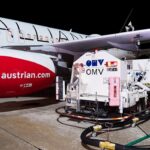
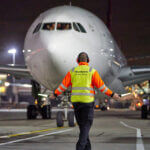
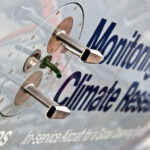



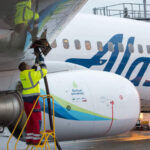
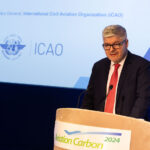

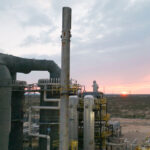

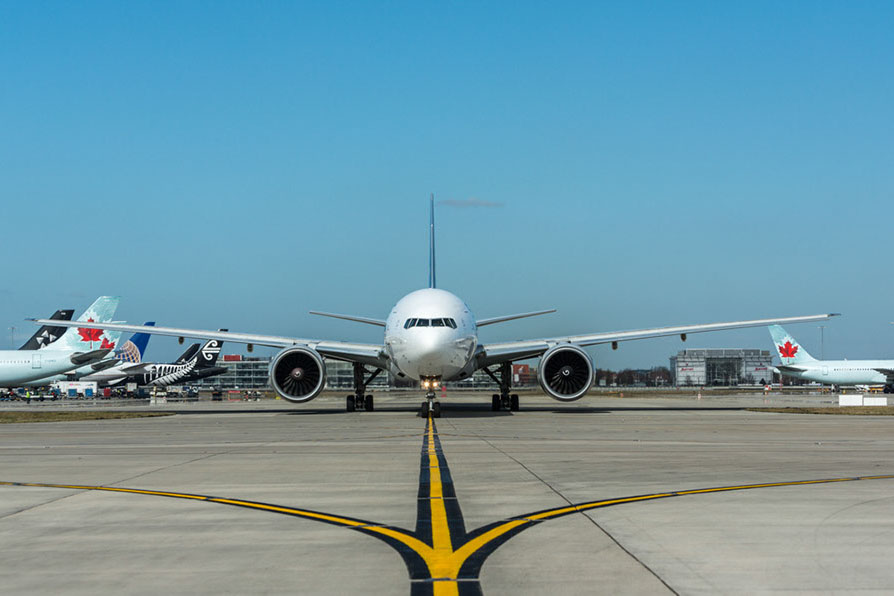

More News & Features
Progress on decarbonising the airline sector has been slow this year, says IATA chief
New study highlights differing strategies and barriers to decarbonising aviation in UK and Europe
ICAO signs agreement with IRENA to boost finance opportunities for SAF production
T&E analysis of business travel emissions finds those companies with targets achieve the most reductions
Cambridge report sets four goals to be implemented by 2030 for global aviation to reach Net Zero
Aircraft lessor SMBC says next generation jets at least a decade away, stressing importance of SAF